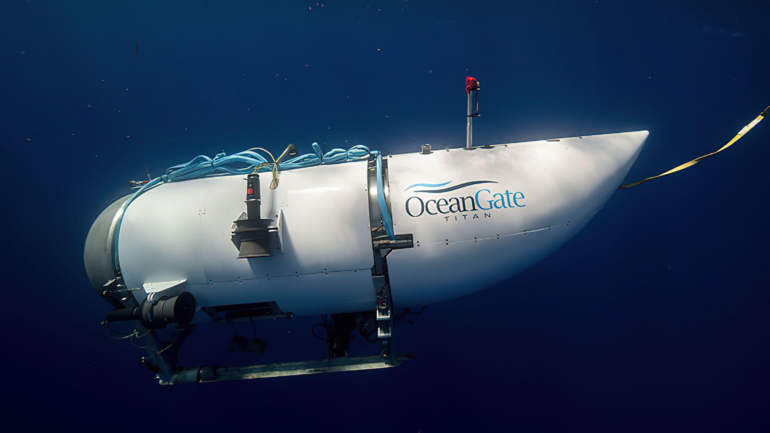European countries have joined forces to conduct search operation in the North Atlantic Ocean to locate a missing submersible that lost contact on Sunday with five people on board running out of oxygen supply.
The vessel, named Titan, was on an expedition to explore the wreckage of the Titanic when it disappeared near the site of the famous ship’s wreckage. Five crew members are believed to be onboard, and authorities estimate that they have approximately 24 hours of oxygen remaining.
Coordinated efforts by ships equipped with autonomous underwater robots are underway to locate the Titan before the oxygen supply runs out.
A Norwegian boat, equipped with advanced underwater technology, is racing against the clock to find the missing submersible. Additionally, a vessel from France has been dispatched to the scene following the detection of “banging” noises near the submersible’s last known location.
The US Coast Guard is leading the complex rescue operation, and they have shifted their efforts based on the underwater sounds detected in the vicinity. However, the search has so far yielded negative results. Authorities are treating the banging noises as a target for search teams. The urgency of the situation has prompted international involvement in the rescue efforts.
The Titan, a carbon-fibre vessel, went missing approximately 700 kilometers off the coast of Newfoundland, Canada. It was equipped with a 96-hour oxygen supply when it departed on Sunday. Two communication systems on the submersible, including text messages with a surface ship and safety pings emitted every 15 minutes, ceased approximately one hour and 45 minutes after submersion.
Experts highlight the challenges faced by the rescuers. In the event of a power or communication failure, the submersible may be floating on the surface, awaiting discovery. If the vessel has developed a hull breach, the situation becomes increasingly dire. With limited options beyond the continental shelf, reaching the submersible at the seabed’s depth becomes highly challenging, if not impossible.
Extensive search efforts have been conducted, covering an area of 10,000 square miles, with assistance from Canadian and US military aircraft. Sonar buoys have been deployed to listen for any possible sounds from the Titan. However, as time is running out, the rescue operation faces significant obstacles in locating and reaching the submersible.
OceanGate Expeditions, the company overseeing the mission, conducts expeditions to the Titanic wreck site with a team of archaeologists, marine biologists, and paying customers known as “mission specialists.” The Titanic, which sank in April 1912, lies 3,800 meters below the surface, and only a few specialized vessels can reach that depth.
As the international rescue effort continues, the hope remains that the missing submersible, Titan, and its crew can be located and brought to safety before their limited oxygen supply is exhausted.



